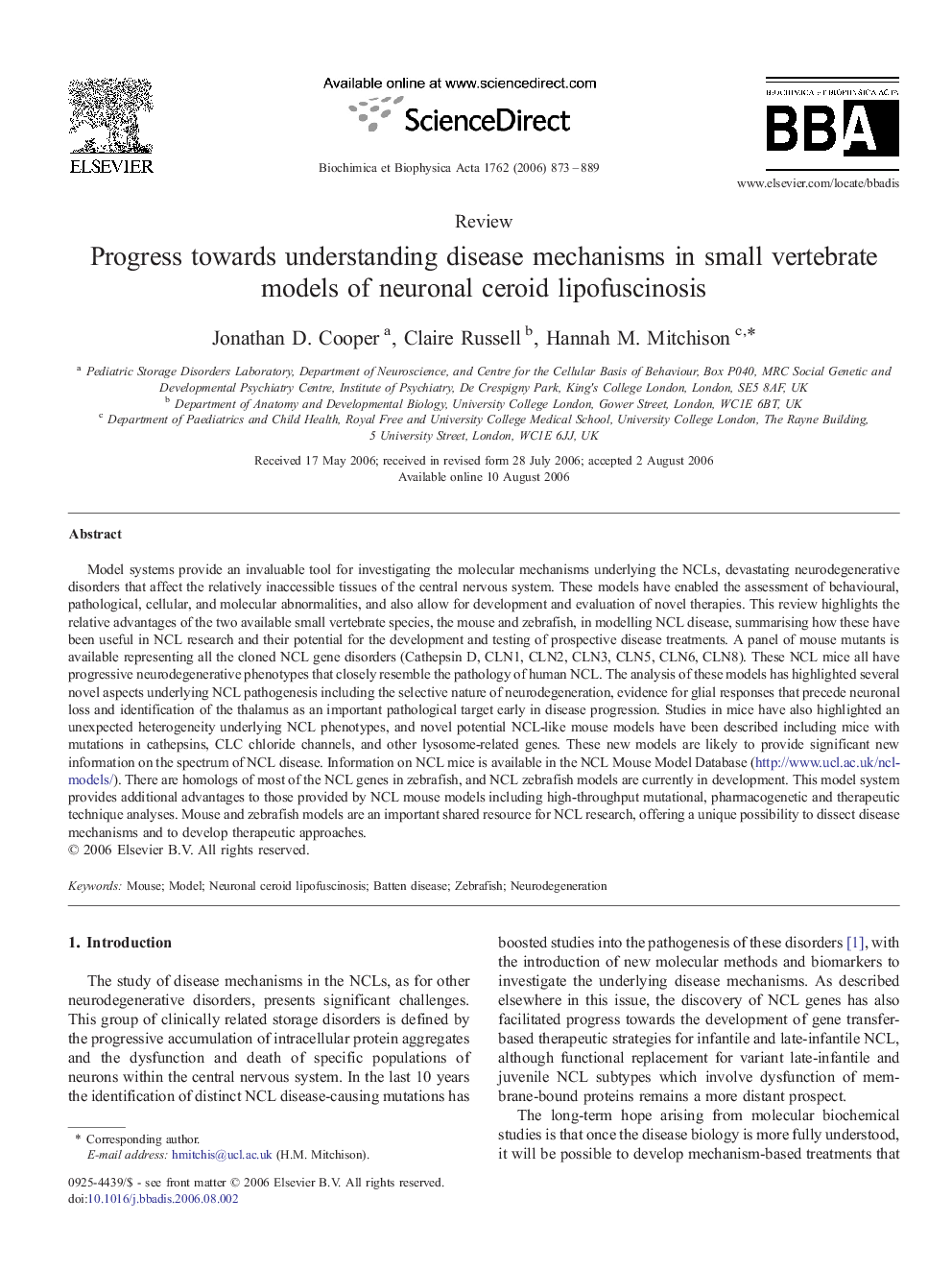| کد مقاله | کد نشریه | سال انتشار | مقاله انگلیسی | نسخه تمام متن |
|---|---|---|---|---|
| 1905946 | 1534747 | 2006 | 17 صفحه PDF | دانلود رایگان |

Model systems provide an invaluable tool for investigating the molecular mechanisms underlying the NCLs, devastating neurodegenerative disorders that affect the relatively inaccessible tissues of the central nervous system. These models have enabled the assessment of behavioural, pathological, cellular, and molecular abnormalities, and also allow for development and evaluation of novel therapies. This review highlights the relative advantages of the two available small vertebrate species, the mouse and zebrafish, in modelling NCL disease, summarising how these have been useful in NCL research and their potential for the development and testing of prospective disease treatments. A panel of mouse mutants is available representing all the cloned NCL gene disorders (Cathepsin D, CLN1, CLN2, CLN3, CLN5, CLN6, CLN8). These NCL mice all have progressive neurodegenerative phenotypes that closely resemble the pathology of human NCL. The analysis of these models has highlighted several novel aspects underlying NCL pathogenesis including the selective nature of neurodegeneration, evidence for glial responses that precede neuronal loss and identification of the thalamus as an important pathological target early in disease progression. Studies in mice have also highlighted an unexpected heterogeneity underlying NCL phenotypes, and novel potential NCL-like mouse models have been described including mice with mutations in cathepsins, CLC chloride channels, and other lysosome-related genes. These new models are likely to provide significant new information on the spectrum of NCL disease. Information on NCL mice is available in the NCL Mouse Model Database (http://www.ucl.ac.uk/ncl-models/). There are homologs of most of the NCL genes in zebrafish, and NCL zebrafish models are currently in development. This model system provides additional advantages to those provided by NCL mouse models including high-throughput mutational, pharmacogenetic and therapeutic technique analyses. Mouse and zebrafish models are an important shared resource for NCL research, offering a unique possibility to dissect disease mechanisms and to develop therapeutic approaches.
Journal: Biochimica et Biophysica Acta (BBA) - Molecular Basis of Disease - Volume 1762, Issue 10, October 2006, Pages 873–889